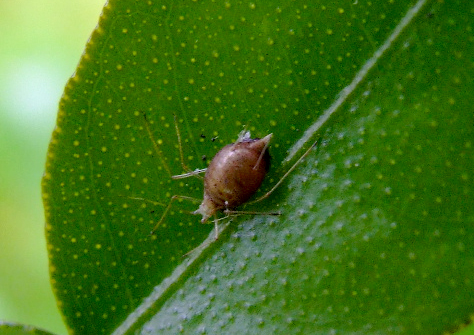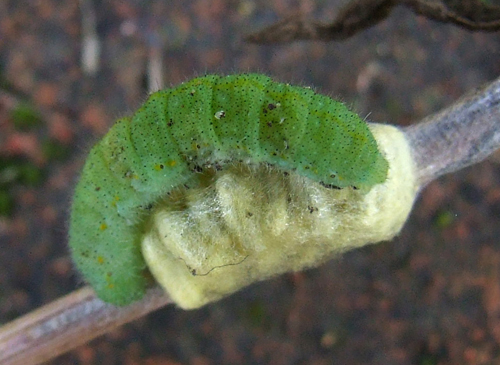Parasitic wasps in the vegetable garden
Beneficial wasps in the garden - how to tell if you've got them
There are fewer chemicals on the market for gardeners these days and whilst that isn't such a concern for those who don't want to use them, it's good to know that there are some insects about that will help to reduce the damage done by two very persistent pests, the aphid and the cabbage white butterfly.
Everyone knows the ladybird; it's hard to miss, after all, and it's larvae are voracious feeders on aphids. Lacewing larvae also eat aphids. But do any other insects help to reduce the number of pests in the garden? Yes, they do.
Parasitic wasps (mainly of the species Aphidius) are tiny creatures and you don't really notice them; they are just one of the many tiny flying creatures that buzz about. Unknown to many, they are a great boon to the gardener, working unseen, clearing and cleaning and improving our crop yields.
Whilst you probably won't notice the wasps themselves, you can see the results of their work and it's a good idea to know what to look for, so that you don't inadvertently add them to the list of 'pest' and destroy them.
When aphids are at their most numerous, clustering over stems, leaves and flowers, drinking sap and leaving their sticky honey dew on plants, parasitic wasps will be looking for somewhere to lay their eggs and their chosen laying site is often an aphid.
When an aphid has been parasitised by one of these wasps it becomes mummified and you may not realise at that point that it is an aphid. The body is becomes hardened and rounded and turns from pale green or black to a metallic gold or bronze colour.

A parasitised aphid
The wasp larvae grows in the aphid and eventually eats its way out of the body. In the picture above, the wasp larvae has not yet done that; when it does, if you look with a good magnifying glass, you can see the hole it has emerged from. It's similar to the idea in the film 'Aliens' and pretty grisly to think about, but extremely useful.
Another useful parasitic wasp helps to keep down the caterpillars of the cabbage white butterfly, the one that eats your brassicas. The first time you notice the work of this wasp is when you come across what, at first glance, looks like a ball of those balls of wool that you pull of jumpers, only it's always yellow and is stuck to a caterpillar.
This wasp is called Apanteles glomeratus. The adult female lays her eggs in a caterpillar, where they develop and emerge as pupae and spin their yellow silken cocoons, where they will stay until they emerge as wasps and mate and then the females can go looking for more caterpillars.

Caterpillar parasitised by Apanteles glomeratus
These are just two of the very beneficial insects in the garden. Look out for the signs and show them to the others who share your garden. With time, they should increase and so help to keep down the numbers of aphids and caterpillars that ruin your plants.
© Copyright Miranda Hodgson 2009